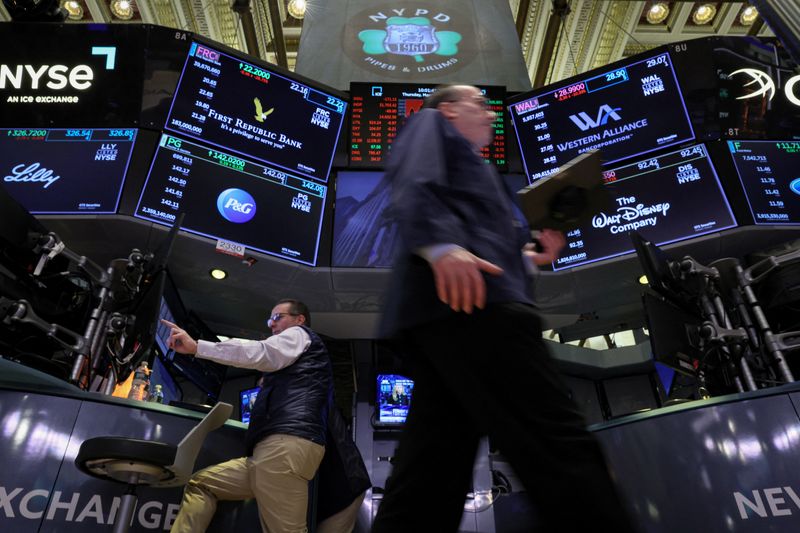Investing.com -- Wall Street heads lower ahead of the release of key retail sales data as well as results from home improvement retailer Home Depot. China cuts interest rates to help its economic recovery, Russia hikes to support the ruble, while Japan’s economy bounces back to life.
1. Futures lower; Russia hikes rates
U.S. futures retreated Tuesday, ahead of the release of key retail sales data and quarterly earnings from a host of retail giants.
At 05:05 ET (09:05 GMT), the Dow futures contract had dropped 170 points or 0.5%, S&P 500 futures fell 20 points or 0.4%, and Nasdaq 100 futures retreated 60 points or 0.4%.
The largest U.S. retailers are set to report their results this week, which will give investors an important insight into the health of consumer spending, a major driver of the U.S. economy.
Home Depot (NYSE:HD) starts the ball rolling later, while Target (NYSE:TGT) will deliver results before Wednesday’s market open, followed a day later by Walmart (NYSE:WMT). Other major retailers such as Macy’s (NYSE:M), Nordstrom (NYSE:JWN), Kohl’s (NYSE:KSS), and Lowe’s (NYSE:LOW) will report in the coming weeks.
Sentiment among global investors improved in August to its least bearish since February 2022, a Bank of America survey showed on Tuesday.
That said, confidence may be hit by the news that Russia's central bank hiked its key interest rate by 350 basis points to 12% earlier in the session, an emergency rate move to try and halt the ruble's weakening.
2. Retail sales, Home Depot earnings in focus
The U.S. is to release July retail sales data later in the session, which is expected to show a pickup in demand at the start of the third quarter after a smaller-than-expected increase in June.
Analysts are looking for an increase of 1.5% from the same time last year and 0.4% from the prior month.
Adding to the mix will be quarterly earnings from a number of the largest U.S. retailers this week, starting with Home Depot before the open Tuesday.
The home improvement retailer is expected to report earnings per share of $4.46 on revenue of $42.2 billion, and analysts will be watching to see how same store sales fared and what executives say about spending by do-it-yourself homeowners.
Telsey downgraded the company to ‘Market perform’ from ‘Outperform’ late last week, saying they "expect Home Depot to experience a slightly steeper slowdown related to the weak housing market trends."
Earnings reports from retailers this week could firm up expectations on consumer spending trends heading into the crucial holiday sales months this fall.
3. Dollar hits new high after China’s rate cut
The safe-haven dollar climbed to a new high overnight in the wake of China’s central bank unexpectedly cutting interest rates to try and support an economy struggling to recover from its COVID hit.
The People’s Bank of China cut key policy rates for the second time in three months, reducing the rate on its one-year medium-term lending facility by 15 basis points to 2.50% from 2.65%.
At 05:05 ET, the dollar index, which tracks the greenback against a basket of six other currencies, traded 0.1% lower at 102.919, after hitting a 1-1/2-month high at 103.46 late Monday.
Data released shortly after the PBOC decision showed slowdowns in industrial output and retail sales in July, raising further concerns about global growth and boosting demand for the perceived safety of assets denominated by the global reserve currency.
4. Japan’s economy sparks into life
The Japanese economy is starting to show some signs of life, after gross domestic product data showed annualized growth surging to 6% in the second quarter, well above the 3.1% expected.
This was the fastest expansion since the final quarter of 2020 and followed a revised 3.7% expansion in January-March.
The growth was largely export-driven, boosted by tourism and auto sales on the back of a weak yen, and will be welcomed by policymakers given inflation is starting to rise on the back of decades of ultra-easy monetary policy.
However, it wasn’t all good news as private consumption, which makes up more than half of the economy, fell 0.5% quarter-on-quarter in the same period as Japanese consumers struggled with price hikes on food and household appliances.
5. Crude market stabilizes
Crude prices stabilized Tuesday, as traders attempted to digest both a surprise rate cut by China [see above] as well as weak economic data from the world’s largest oil importer.
By 05:05 ET, U.S. crude futures were 0.2% lower at $82.33 a barrel, while the Brent contract fell 0.1% to $86.11 per barrel.
Weak industrial production and retail sales data, released late Monday, showed that growth in the second-largest economy in the world slowed further last month, likely reducing demand for crude.
Attention will turn to the U.S. market, with the release of inventory data from the industry group American Petroleum Institute later in the session, as a precursor to official inventory data from the U.S. Energy Information Administration on Wednesday.
The API reported a build of just over 4 million barrels in U.S. crude stocks last week.
